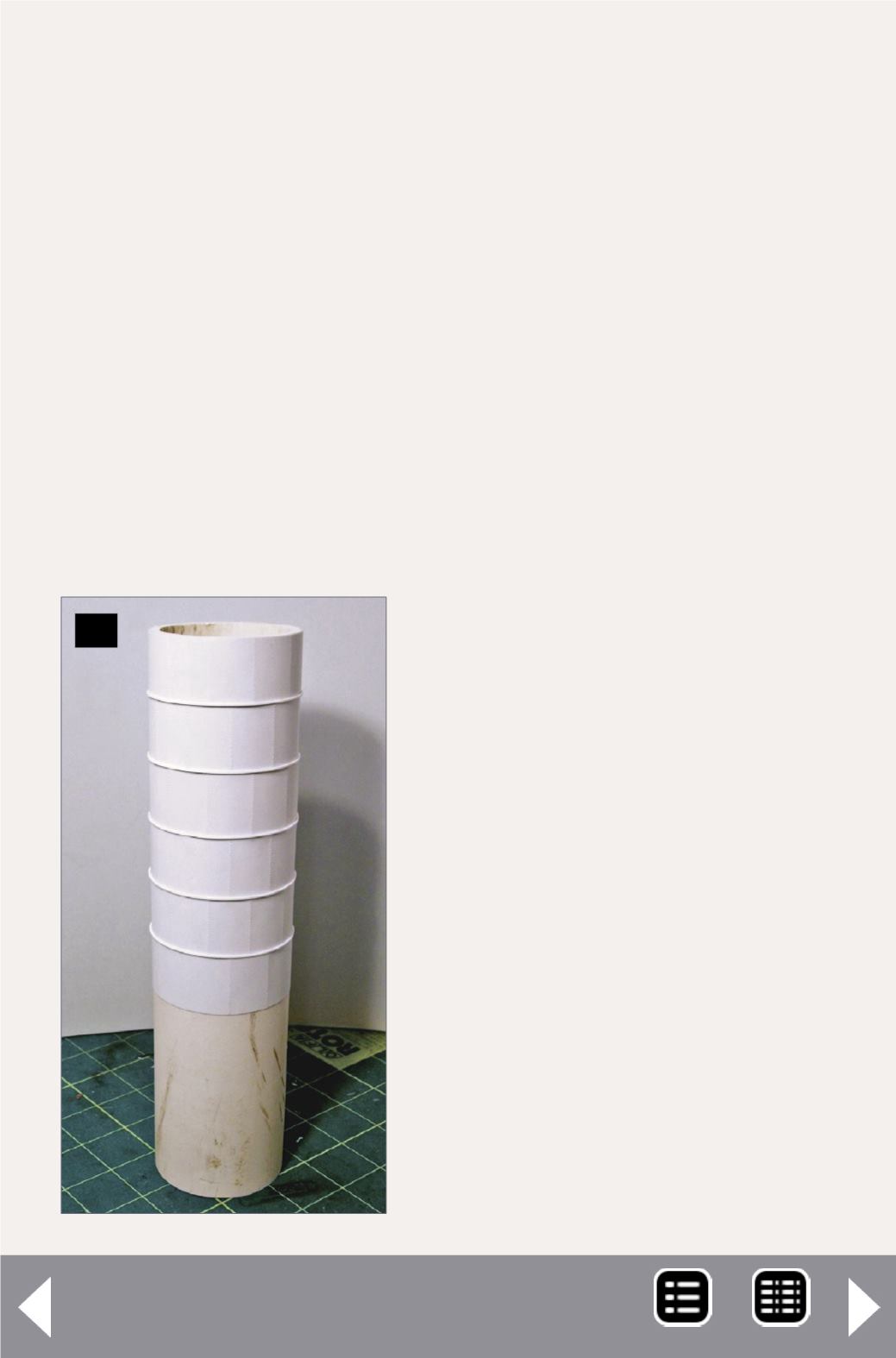
With the silos completed, I temporarily placed each one in
place so that I could lay out the main auger trunk line running
the length of the silo base, and the locations of the chutes
that connected each silo to the main auger. The augers them-
selves were assembled from ¼” styrene tubing with a piece of
.020” thick by .40” wide piece of strip styrene attached to the
tubing lengthwise. Two pieces of .030” by .040” styrene were
placed on either side of the tube, and a strip of .010” styrene
was wrapped around the tubing in a U-shape [20 and 21]. The
wrapped styrene required several applications of body putty
and sanding to get a smooth seam, but ultimately I wasn’t wor-
ried about being perfect, since the detail was hidden beneath
the silos and bracing.
Once the main auger was complete, I followed the same pro-
cess, with slightly smaller .219”
tubing for the chutes that run
perpendicular to the main auger
Agway Feed Mill - 13
24. In this view, the styrene
panels are being applied to
the end silo. The end silo
construction differed than
the other silos as each panel
was separately wrapped with
styrene. The panels were
seven scale feet in height with
rivets punched every five feet
with overall circumference of
54.2 scale feet. Between each
panel was a piece of .030”
by .030” piece of styrene to
match the prototype.
24
MRH-Sep 2014


